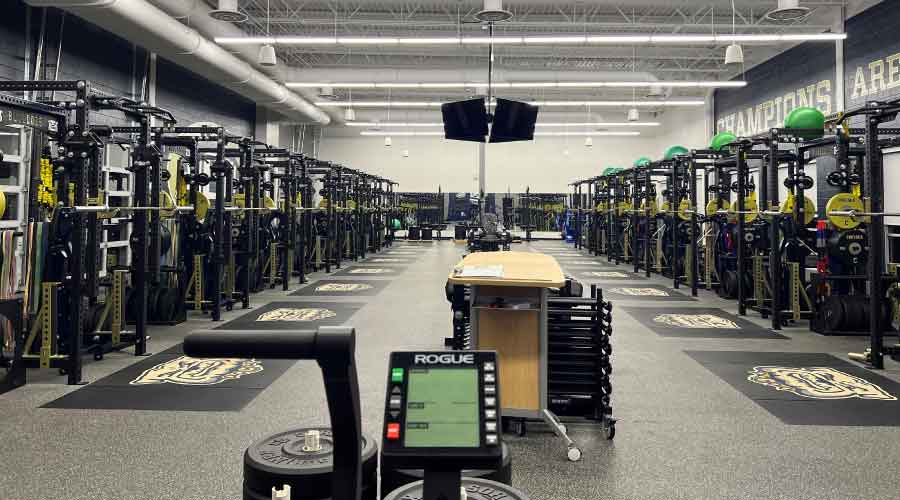Lighting and HVAC Considerations per Hospital Space Type
A hospital has a range of very specialized rooms, and there are specialized lighting and HVAC considerations for each type of space.
Patient Rooms. Lighting for patient rooms should be designed to meet patient and caregiver needs. Patient needs include non-glare lighting with a patient reading light at the end of the bed. The patient should be able to control the lighting, including integrated window-shading and daylighting systems. Caregivers need examination lighting at the torso level for patient evaluation.
LED (light emitting diode) lighting has an extremely long product life, often at the 50,000 hour level — substantially longer than older lighting technologies. This makes LED lighting an ideal application for hospitals because of the inconvenience and disruption involved in replacing lamps in hospital spaces such as patient rooms and operating rooms. LED lighting is also mercury-free which is important to health care facilities.
Studies have demonstrated that patient room LED lighting can help both nursing staff and patients. The Lighting Research Center at Rensselear Polytechnic Institute conducted an experimental study at the Schuyler Ridge Residential center, a 120-resident skilled residential nursing facility in Clifton Park, New York. The LRC team installed energy-efficient LEDs to determine whether an energy-efficient solution could "improve the comfort and care of seniors, assist the nursing staff in their nightly rounds, and help residents navigate hallways." The LRC team concluded that "an automated, non-disturbing lighting scheme could be designed to help patients get in and out of bed at night, as well as give nurses enough light for their rounds. Hallways could be distinguished through the uses of colored lighting, which theoretically would serve as a navigation guide for residents and visitors."
For patient rooms, HVAC systems should insulate the patient from direct air flow and existing air should repeatedly be replaced with clean air based on building code or higher per-hour air-change requirements.
Operating Rooms. Lighting is literally life critical in operating rooms, and operating room lighting is experiencing rapid technological change. Today's operating rooms are equipment-intensive, so quality, reliability, long life, heat reduction, energy consumption, and physical size are important lighting characteristics.
Many hospitals are experimenting with high-end LED systems that have longer life, use less energy and operate at lower temperatures. As with many health technologies, there are choices between very high-end, high-cost products and value-oriented choices. Large-budget teaching hospitals attempting to attract the best physicians may opt for a new expensive state-of-the-art LED operating room system. By contrast, a community hospital on a tight budget may be able to refurbish an existing lighting system and satisfy most of its lighting needs.
A major hospital LED lighting beta test was conducted in 2008 at Florida Hospital, a part of the Adventist Health System in central Florida. The Adventist Health System sees more Medicare patients than any system in the country, so operating cost reduction is crucial to this organization. The intense LED lighting was particularly helpful to surgeons who had to operate in deep cavities. The lighting was modular and very easily plugged in and out of the base, which was useful in the operating room setting.
Parking Garages. Many hospitals have large adjoining parking garages that can save substantial energy costs and generate large tax deductions by upgrading to energy efficient fixtures. In Notice 2008-40 issued March 7, 2008, the IRS announced that parking garages are a property class that is specifically entitled to use the EPAct tax deductions. Also, parking garages are excluded from the tax bi-level switching requirement. LED parking garage lighting is one of the fastest growing LED lighting categories.
Hospital Support Spaces. Hospitals often have large kitchen, storage, and laundry (so called back-of-the house) spaces that have historically used T12 fluorescent lighting. This lighting is so energy inefficient compared to today's lighting products that it is illegal to manufacture or sell standard T12 lamps in the United States as of Jan. 1, 2010. Although 34 Watt T12 lamps are still available, hospitals should consider replacing T12 lighting systems to save both energy and maintenance costs. Upgrades from T12 systems often bring substantial energy savings and are often good candidates for EPAct deductions.
Related Topics:













